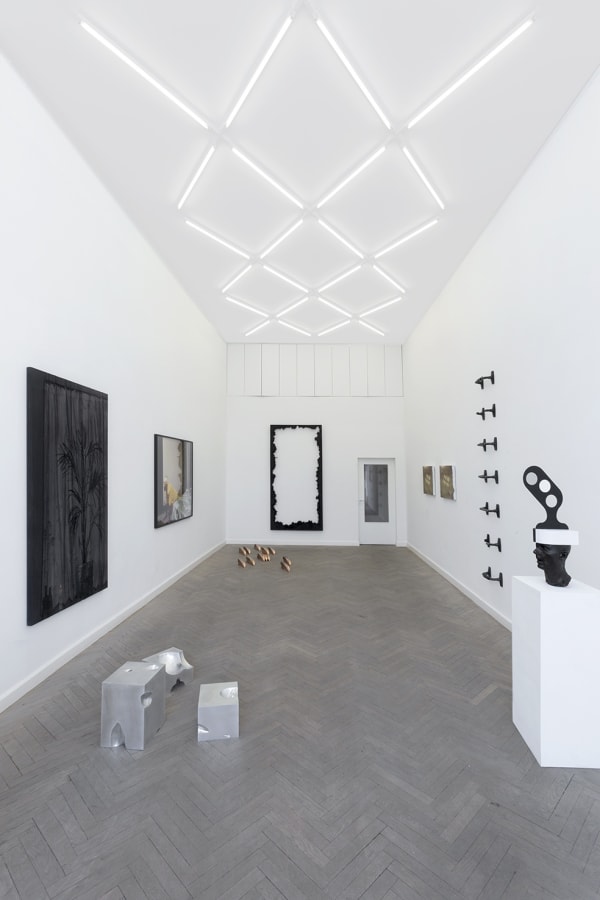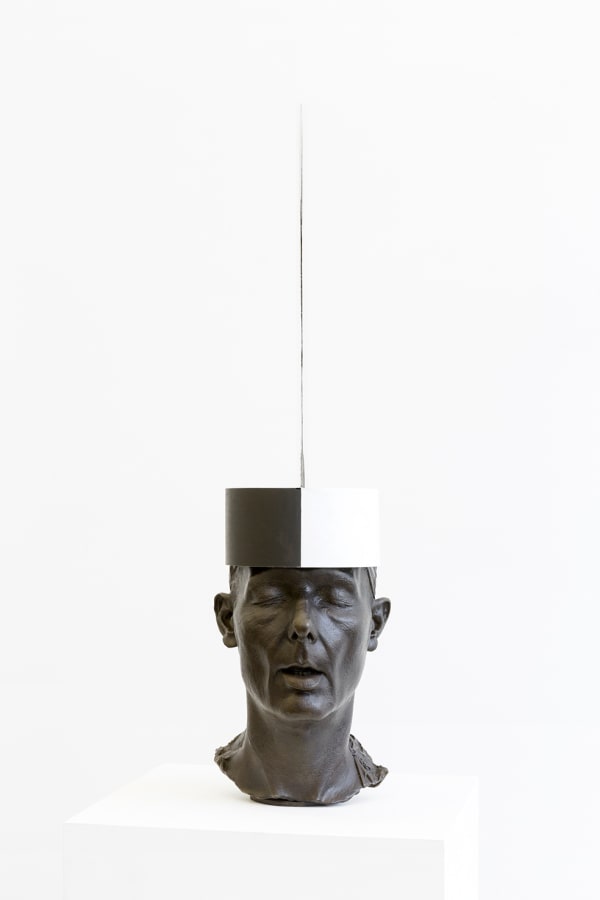Pop-up GRIMM Brussels: Group Exhibition
GRIMM is pleased to announce an exhibition in Brussels. In a gallery space across the street from BOZAR we will present a group exhibition with selected highlights from our gallery program. The opening will take place during the official Art Brussels Gallery Night on April 18th and the exhibition will be on view until May 5th.
Works by Adriano Amaral, Charles Avery, Dave McDermott, Desirée Dolron, Alex Dordoy, Adam Helms, William Monk, Ciarán Murphy, Daniel Richter, Lucy Skaer, Alex van Warmerdam, Eric White and Nick van Woert will be presented along with the following gallery artists:
Claudia Martínez Garay (1983, PE) investigates objects’ journeys between their origin and destination, suggesting that the information accrued in these transitory spaces holds value and power. After encountering a ceramic vase at the Ethnological Museum of Berlin depicting a Moche prisoner moments before he was sacrificed, Martínez Garay began speculating how art can underline implications of cultural appropriation and contribute to creating narratives that challenge, and complicate, the discourse of domination and cultural hegemony. She will present various new works in clay and ceramics. Her work is currently on view at the New Museum Triennial: Songs For Sabotage.
Dana Lixenberg (1964, NL) presents an iconic photograph from her extensive editorial practice. Working for publications such as The New Yorker, New York Times Magazine, Vibe and Newsweek in the nineties and zeros, Lixenberg explored the United States through her lens. The power of her work arises from the intimacy and the absence of social stereotyping.
In his sculptures, paintings, installations, prints and video works, Matthew Day Jackson (US, 1974) investigates the fatal attraction of the frontier. His images of physical and mental stress stem from the edges of human experience in the age of technology. Addressing the myth of the American Dream, the artist explores the forces of creation, growth, that challenge, and complicate, the discourse of domination and cultural hegemony. With American English from the series Gunshot Plywood Bronze Works he explores our ongoing capacity for destruction. The artist explains:
“At the very core of American Identity is the subject of value founded in the idea of property ownership and the ability to defend oneself and said property. The single-family home and the firearm are two great metrics to determine the value of the individual in American culture. It might also be noted that violence is a language, and one that is deeply imbedded in western culture, in its technology, in its diplomacy, in its civil law, in its institutions, in its history. The reminder of this is founded in the seemingly constant barrage of mass shootings and of police killing unarmed black men. [...] Plywood is structural and functions as
a facial layer and is the surface upon which our reality is affixed. It supports our ideas of ourselves, and in the case of these sculptures it is a framing device lying at the intersection of ownership and violence, two primary lenses through which America sees the world and itself. Bronze is the material of the memorial, or the statue. I think of these as American Statues, memorials to hopefully being understood in the future as the way we were.”
Michael Raedecker (1963, NL) presents new work from his latest series cntrl, currently exhibited at GRIMM Keizersgracht in Amsterdam. The process behind Raedecker’s new paintings is complex –a series of archaeological strata. First, the artist applies painted marks and washes to a primed canvas. Next, the canvas is coated in acrylic medium, to which he sticks a found photographic image, reproduced on paper using a standard inkjet printer. Once the medium has absorbed the ink, and the image has been transferred, he tears away the paper, and gets to work with his hallmark lengths of thread, sometimes stitching them through the canvas, sometimes suspending them in the sticky, drying medium, almost as though he were creating a low relief sculpture.
Letha Wilson (1976, US) has expanded boundaries between photography and sculpture by questioning how a photograph can be physically engaging. Wilson trades the traditional confines of a photographic image by merging them with monumental materials that complicate the duality between the natural landscape and our industrial, synthetic society. Using landscape photography as a source, Wilson’s balance of material and image speaks to our relationship with the landscape, using both intimate and vast details of nature as subject. Her solo exhibition is currently on view at GRIMM New York, showcasing a selection of new sculptural works that combine landscape photographs with industrial materials like aluminum, zinc, concrete and steel.
Caroline Walker (1982, UK) presents oil sketches that are part of a larger series that she will exhibit in her upcoming solo presentation at our New York gallery this May. Walker’s intimate scenes build upon the language of city life with the pronounced quality of a voyeuristic gaze. Her quietly charged spaces, frame half-told narratives that complicate traditional ideas of the woman as subject. The works explore femininity in our modern, image-conscious age.
Matthias Weischer (1973, DE) presents two new paintings that balance between reality and imagination. Secular painterly themes like the interior and the landscape are the key motifs in his oeuvre. Weischer is interested in the historical perspective of painting; both the medium as well as the classical system of representation.
His investigation into the depiction of three-dimensional space is of great importance in his work. Collage-like painted elements build upon imagery that is as diverse as wallpaper motives, mosaic floors, windows sills, pieces of furniture, loose bricks or part walls, and the occasional reference to a figure or element in settings that range from desolate rooms to lush fields in the countryside.
























